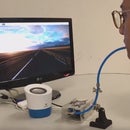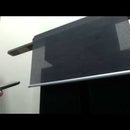Introduction: Simple Urban Farming Project
For sustainable communities we need to be equipped ourselves with right tools & equipment to adapt with the changes.
Here's a simple project if you are thinking about setting up a small to wide scale Urban farming to monitor your plant's condition even on your busy schedules.
This device is expandable to use Internet to post data to the Cloud & send notification to your phone the condition of your farm, so you don't need to bother to monitor every now & then.
This project can monitor the following: - Temperature - Water Level - Light - Push notification to your Smart Phones (expandable to additional features)
Step 1: Make Your Own Casing
Below is the raw file sets of code that you can refer, there are many ways of doing this. I posted here my sample so that you can start from here to modify. Goodluck! Let me know if you have questions :)
int ledNorm = 8; // if temperature sensor is Normal
int ledPhoto = 9; // if it's Dark it will light up int led = 10; // reserve LED for additional feature int ledDanger = 13; // if temperature sensor reach 30C
const int photoPin = A2; // photo sensor is connected A1 analog int SensorValue = 0;
// include the library code: #include
// initialize the library with the numbers of the interface pins
LiquidCrystal lcd(12, 11, 5, 4, 3, 2);
// named constant for the pin the Temperature sensor is connected to const int sensorPin = A0; // room temperature in Celcius const float baselineTemp = 20.0;
void setup() { // set up the LCD's number of columns and rows: lcd.begin(16, 2); // initialize the serial communications: Serial.begin(9600); pinMode(ledNorm, OUTPUT); pinMode(ledPhoto, OUTPUT); pinMode(led, OUTPUT); pinMode(photoPin,INPUT); pinMode(ledDanger, OUTPUT); } // this code is for PHOTO SENSOR void photoLight()
{ Serial.println(SensorValue); SensorValue = analogRead(photoPin); delay(5); if (SensorValue == 0 ) { digitalWrite(ledPhoto, HIGH); } else { digitalWrite(ledPhoto, LOW); } }
void loop() { // this code is for TEMPERATURE SENSOR int sensorVal = analogRead(sensorPin); float voltage = (sensorVal / 1024.0) * 5.0; float temperature = (voltage - 0.5) * 100;
lcd.setCursor(0,0); lcd.print("Degree C = "); lcd.print(temperature); delay(1000); if (temperature > 30 ) // if temperature sensor reach 30C { digitalWrite(ledNorm, LOW); digitalWrite(ledDanger, HIGH); } else { digitalWrite(ledNorm, HIGH); digitalWrite(ledDanger, LOW); } photoLight(); }













